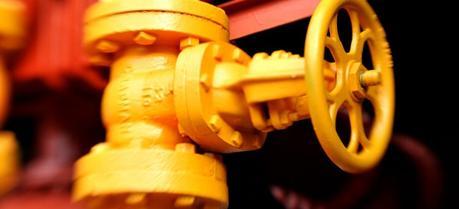 Gas processing plants are significant sources of methane, researchers have found. (Credit: Flickr @ Will Merydith http://www.flickr.com/photos/merydith/)
Gas processing plants are significant sources of methane, researchers have found. (Credit: Flickr @ Will Merydith http://www.flickr.com/photos/merydith/)About 50 percent more of the greenhouse gas methane has been seeping into the atmosphere than previously thought, according to far-reaching findings that synthesize two decades’ worth of methane studies in North America.
The study was a broad-based effort led by Stanford University that involved researchers from the University of Michigan, MIT, Harvard University and 11 other institutions and national laboratories. It’s the first to integrate studies that looked at both individual ground-based components and continental-scale observations.
“People who go out and actually measure methane pretty consistently find more emissions than we expect,” said Adam Brandt, an assistant professor of energy resources engineering at Stanford University.
Methane is about 30 times more potent a greenhouse gas than carbon dioxide. It burns cleaner than coal, though, so it’s often considered a more sustainable energy source.
Studies have raised questions about whether leaky valves and pipes in the rapidly growing natural gas industry could negate potential environmental benefits. This new study, published in the Feb. 14 issue of Science (see footnote), provides some answers: Yes and no.
The Environmental Protection Agency and other organizations have consistently underestimated methane leakage, the study says. But the amount that’s presently escaping from faulty oil and gas infrastructure would not be enough to reverse the climate benefits of burning natural gas instead of coal to make electricity.
The researchers also provide evidence that several recent findings of alarmingly high localized methane emissions can’t be scaled up to tell a story about the entire industry.
“These very high emission cases do not appear representative of the whole system. If they were, we would see more methane than observed in continental scale studies,” said co-author Eric Kort, an assistant professor of atmospheric, oceanic and space sciences at U-M.
Kort and his colleagues suggest that relatively few sources could be responsible for the lion’s share of the methane leakage. Other studies have raised this “super-emitter” idea too and perhaps these high emissions sites fall into that category. A method to rapidly identify and fix super-emitters could substantially lower emissions, Kort said.
The researchers urge caution going forward.
“Right now in the U.S. we have a large expansion of the natural gas industry,” Kort said. “To maintain the climate benefit moving forward, we need to reduce unnecessary fugitive emissions and ensure leakage rates are sufficiently low.”
Kort said that while many independent studies appeared to disagree, when considering all the studies together, there is a convergence towards the same answer: “More methane is being emitted than previously thought.”
The research was funded by the nonprofit organization Novim through a grant from the Cynthia and George Mitchell Foundation.
Last month, we reported on a study that found more than 5,893 gas leaks from aging natural gas pipelines under the streets of Washington, D.C.
In the video below Stanford’s Adam Brandt explains findings that methane leakage from the U.S. natural gas infrastructure is much higher than official estimates.
A.R. Brandt, G.A. Heath, E.A. Kort, F. O’Sullivan, G. Pétron, S.M. Jordaan, P. Tans, J. Wilcox, A.M. Gopstein, D. Arent, S. Wofsy, N.J. Brown, R. Bradley, G.D. Stucky, D. Eardley, R. Harriss (2014). Methane Leaks from North American Natural Gas Systems Science, 343 (6172), 733-735 DOI: 10.1126/science.1247045
